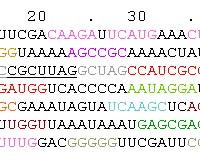| . |  |
. |
University Park PA (SPX) Dec 02, 2010 In Australia, when crossing from one state to another, travelers may encounter a quarantine stop and may be required to forfeit recently purchased fruits and vegetables as a hedge against invasive pests. But in the U.S., crossing state lines is free wheeling, according to researchers from the U.S., Australia and New Zealand, who evaluated the threat of invasive pests to states from within the country. "We concluded that the immediate threat from known invasive insect pests is greater from within the United States than without," the researchers reported in the current issue of Nature Communications. "Our findings have significant implications for biosecurity policy and the need to consider security measures beyond established national borders," said Matthew Thomas, professor of entomology, Penn State. Alien invasive species cost the U.S. economy $120 billion annually. Determining the identity and potential entry paths for these species is important for farmers and policy makers, especially in light of the increases in global trade and transport of agricultural materials internationally. The researchers, who included Thomas; Dean R. Paini, David C. Cook and Paul J. De Barro of CSIRO Ecosystems Science, Canberra; and Susan P. Worner, Lincoln University, Canterbury, New Zealand, looked at a large database comprising details for over 850 pest species across 459 different geographic locations around the globe to determine which insect species are normally found together. Insect pests do not assemble randomly, but come together based on shared ecological and environmental features. For example, two species that feed on citrus crops in sub-tropical environments might often be found together, but they are unlikely to share many features with a pest that attacks sweet corn in temperate environments. This approach of comparing different species assemblages enabled the team to generate lists of the top 100 known insect pests most likely to establish in the U.S. and each of the 48 contiguous states. The researchers found that, while all the top 100 known exotic insect pests for the entire U.S. already exist in the country, the top lists for each of the states included many species that are yet to establish in those states. In all cases except one, the absent pests do occur somewhere else in the U.S. and more often than not, they are found in a neighboring state. In fact, 12 states had every pest species that they were missing located just across their borders in a neighboring state. The one exception is Florida, which is one of a few states to have a relatively unique pest assemblage, perhaps because of the tropical nature of its environment. Insect pest assemblages are not necessarily the same across neighboring states. While New York, Pennsylvania, Ohio and Michigan form a cluster of similar species, so does Minnesota. However, Wisconsin does not, but shares a species assemblage more similar to Maine. The south is a solid block from Texas to Virginia, excluding Florida and including Missouri and Illinois. Farther west the Dakotas, Montana and Wyoming share pest profiles with Nevada, but Utah, Colorado and New Mexico are more like Nebraska. The researchers used a computer approach called artificial neural networking - a program that links information on branches like biological neurons - to determine the interconnectivity of the pest assemblages across different sites. They searched an existing database, CABI Crop Protection Compendium, to identify the top 100 potential invasive insect pests for the entire U.S. and individual states. They then determined which species did not yet reside in these top 100 lists. Thomas and his colleagues found that no relationship existed between the state's size and the number of potential pests still absent in the state. They also found that southern states with their increased biodiversity did not have fewer absent insect pests from their mix of potential pests. They did find significant negative relationships with both the number of incoming domestic air passengers and the gross national product of the state. States with higher gross national products had fewer missing potential insect pests and states with higher domestic air passenger traffic also had fewer absent potential insect pests. "The fact that exotic species absent from one state were frequently found in a neighboring state implies the ease at which pests could arrive from a neighbor," said Thomas. "Fly into a U.S. airport from overseas and there are many biosecurity measures in place to reduce accidental introduction of a pest, weed or disease. Our analysis suggests the risks might be just as great flying into a domestic terminal or crossing a state boundary by car."
Share This Article With Planet Earth
Related Links Penn State Darwin Today At TerraDaily.com
 Tech innovations fuel biology breakthroughs
Tech innovations fuel biology breakthroughsParis (AFP) Dec 1, 2010 New technologies that help drive the blistering pace of discovery in biology were highlighted by a panel of experts Wednesday in a "top ten" list of game-changing innovations. Number one in the ranking compiled by The Scientist magazine is a so-called "third generation" gene sequencer from US-based company Pacific Biosciences. The 700,000 dollars (540,000 euros) machine is the first to b ... read more |
|
| The content herein, unless otherwise known to be public domain, are Copyright 1995-2010 - SpaceDaily. AFP and UPI Wire Stories are copyright Agence France-Presse and United Press International. ESA Portal Reports are copyright European Space Agency. All NASA sourced material is public domain. Additional copyrights may apply in whole or part to other bona fide parties. Advertising does not imply endorsement,agreement or approval of any opinions, statements or information provided by SpaceDaily on any Web page published or hosted by SpaceDaily. Privacy Statement |